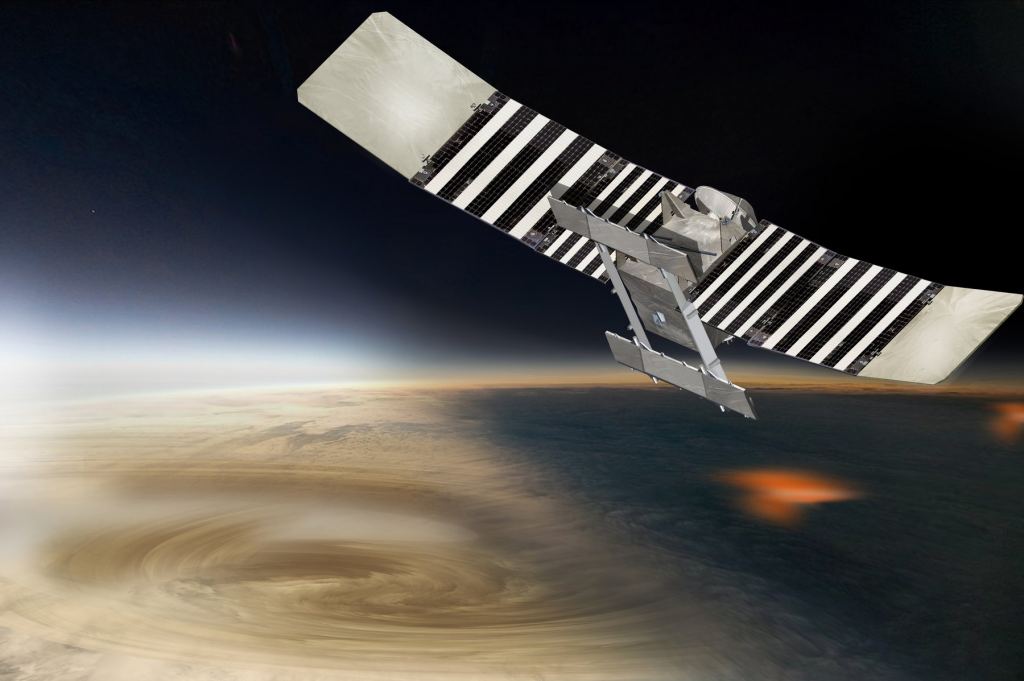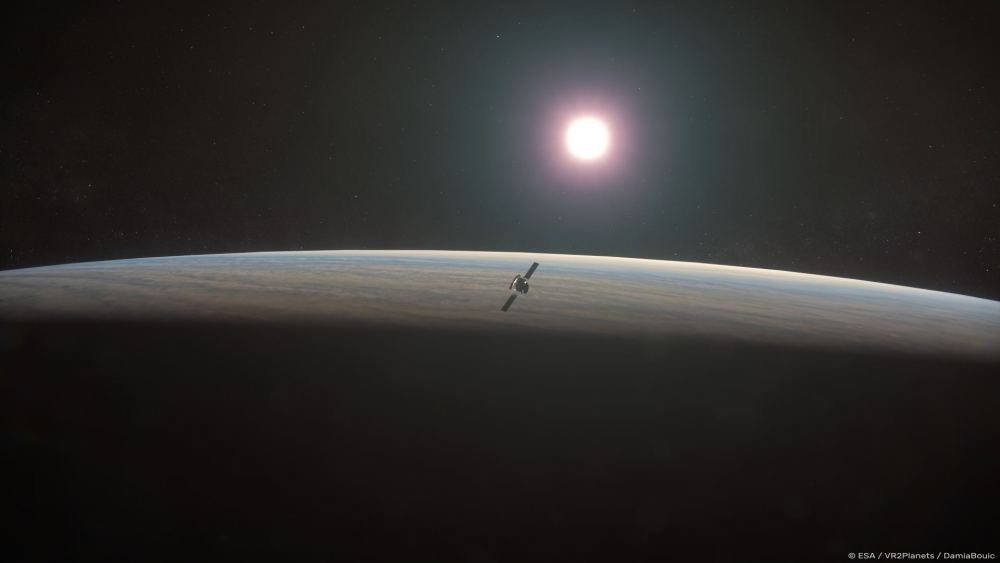When it comes to planetary exploration, particularly of Venus, a big part of the story is under the surface. It’s a story that ESA’s EnVision mission was selected to tell when it gets to the planet in the 2030s. That’s because the spacecraft will include a subsurface radar sounder (SRS) to “peek under the surface” of Venus.
You would think that since Venus has many characteristics similar to Earth that planetary scientists already know everything about it. It’s about the same size as Earth and roughly the same bulk composition (i.e. a rocky world). But, it’s not Earth’s twin, as scientists once thought. It’s got a thick atmosphere and high surface temperature. And, for a world that’s about the same age as Earth, it’s got a very young surface. That means it’s been paved over, and that implies volcanism.
The evidence for volcanism in the past is there. Yet, due to the clouds, we haven’t seen actual, active volcanism. So, scientists don’t know as much about the interior as they’d like. Is it a volcanically active world? That (among other questions) is what EnVision and two other missions, NASA’s VERITAS and DAVINCI+ probes, hope to answer.

The Known Knowns about Venus Exploration
Those three missions follow on the heels of multiple Venus probes that began visiting the shrouded planet in the early 1960s. Venus was the first planet to be explored by a spacecraft. In 1962, Mariner 2 flew by and returned data about the clouds. The Soviet Venera probes followed (two of which returned the first images from the surface), Pioneer Venus, Magellan, Akatsuki, and the Venus Climate Orbiter (both from Japan). Other spacecraft, such as the Parker Solar Probe, flew by on the way to other targets. From those missions, we’ve learned more about the clouds and surface of the planet.
The Magellan probe imaged nearly the entire surface using synthetic aperture radar. From its images, planetary scientists saw evidence of volcanism, as well as large impact craters. Volcanic flows cover at least 85 percent of Venus’s surface and no evidence of any other activity, such as water erosion.
What EnVision Could Tell us about Venus
Surface conditions are difficult to navigate for spacecraft, but it turns out that ground-penetrating radar can reach a few hundred meters beneath the crust. Given that, the EnVision mission will set out to answer several questions: Is Venus geologically active now? If so, how much activity? How have the surface and interior of the planet evolved over time? And, why is the atmosphere such a hostile one, with its thick blanket of clouds, carbon dioxide air, and sulfuric acid rains? Ultimately, knowing the answers to these questions will help solve the biggest mystery of all: what happened to Venus to turn it into such a hellish place?
To answer the questions about what’s beneath the Venus crust, the subsurface radar sounder will transmit signals at a central frequency of 9 MHz with a bandwidth of 5 MHz. The materials should “echo back” the signal in the high-frequency part of the spectrum. As SRS moves along its orbital track, the backscattered signal should tell something about the composition of the subsurface as well as its structures. The resulting radar profile could reveal a lot about what’s “down there”.
Let’s say Venus is volcanically active. A subsurface radar could show the location of vents and volcanic “plumbing” from deeper underground. Probing relatively smooth plains on the planet could show where volcanic deposits have filled in older impact craters. Although Venus has no tectonic plates, it does have tectonic activity. That includes faults and folds in its rock layers, along with the aforementioned volcanoes, and rift valleys that form when the surface pulls apart. Subsurface scans might reveal where faulting and other geological features exist, perhaps also under thick volcanic deposits.
More about Envision
The EnVision mission is ESA’s fifth medium-class mission to Venus. It’s being planned in a partnership between NASA and ESA, and NASA will be providing the synthetic aperture radar instrument, which will map the surface (much as Magellan did). In addition to the two radars, the orbiter will carry spectrometers to study the atmosphere and surface. They will monitor trace gases in the atmosphere and analyze surface composition. The idea is to look for surface changes that might be linked to signs of active volcanism. Along with the VERITAS and DAVINCI missions, EnVision should reveal all we need to know about volcanic activity on Venus.
Watch and Learn about EnVision
For More Information
Deep Atmosphere Venus Investigation of Noble Gases, Chemistry, and Imaging (DAVINCI) Mission
Exploring Venus subsurface: Analysis of geological targets and their properties
EnVision: Exploring a Partnership between ESA and NASA
ESA Selects Revolutionary Venus Mission EnVision
Venus Emissivity, Radio Science, InSAR, Topography, and Spectroscopy (VERITAS) Mission
Understanding our Home World, FAQ: Venus


“Turns out, Venus (almost) has tectonic plates
A new look at old images of Earth’s strange sister shows hints that the planet’s crust was more mobile more recently than previously thought.”
“Magellan’s radar mapped 98 percent of Venus’ surface between 1990 and 1992. The images show that the flat volcanic lowlands that cover over 80 percent of the planet are striped with ridges and grooves — evidence of geological pushing, pulling and scraping that must have happened sometime after the lava fields were laid down.
Byrne and co-workers noticed that the ridges seemed to outline distinct chunks. They identified 58 clearly defined crust blocks in lowlands all over the planet, the largest of which is about the size of Alaska. Some of the blocks appear connected. Laurent Montesi, a planetary geologist at the University of Maryland who was not involved with the study, says he wouldn’t be surprised if there was a network of them covering the whole planet.
When tectonic plates on Earth collide, one will get shoved under the other in a process called subduction. There’s no evidence of subduction on Venus, which is why it can’t truly be said to have tectonic plates. What it seems to have, Montesi says, are “rigid fragments in a sea of more mushy stuff that enables them to jostle around,” pushed by the internal motion of the mantle. When they bumped into each other, the blocks crumpled at the edges to raise up the ridges that encircle them.”
[Brianna Barbu, Astronomy, 2021]